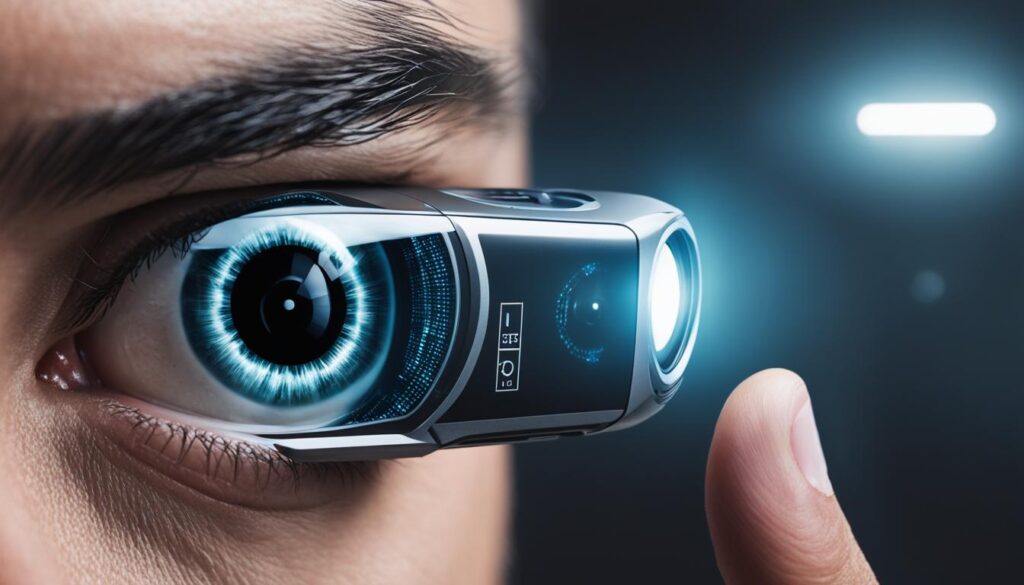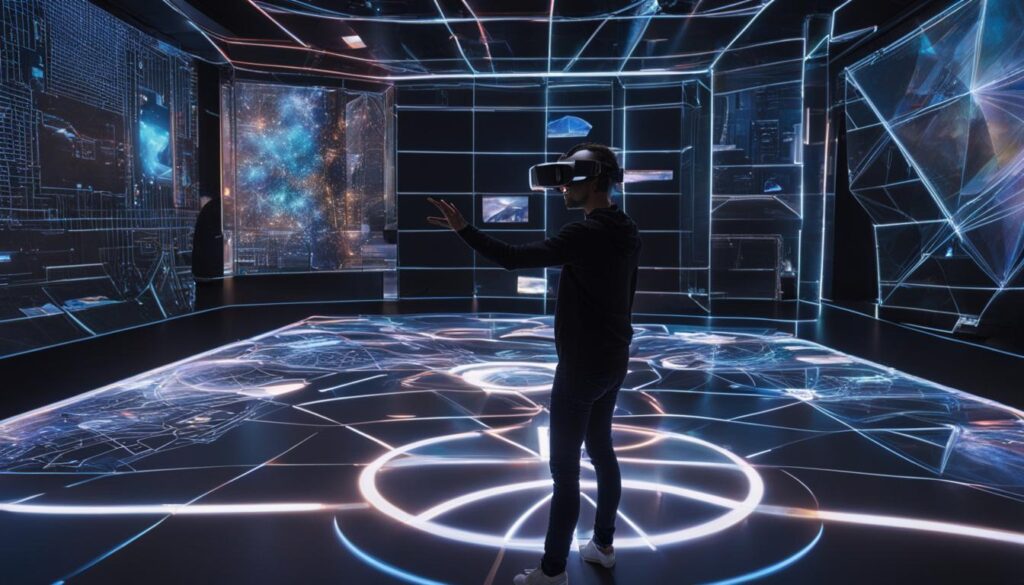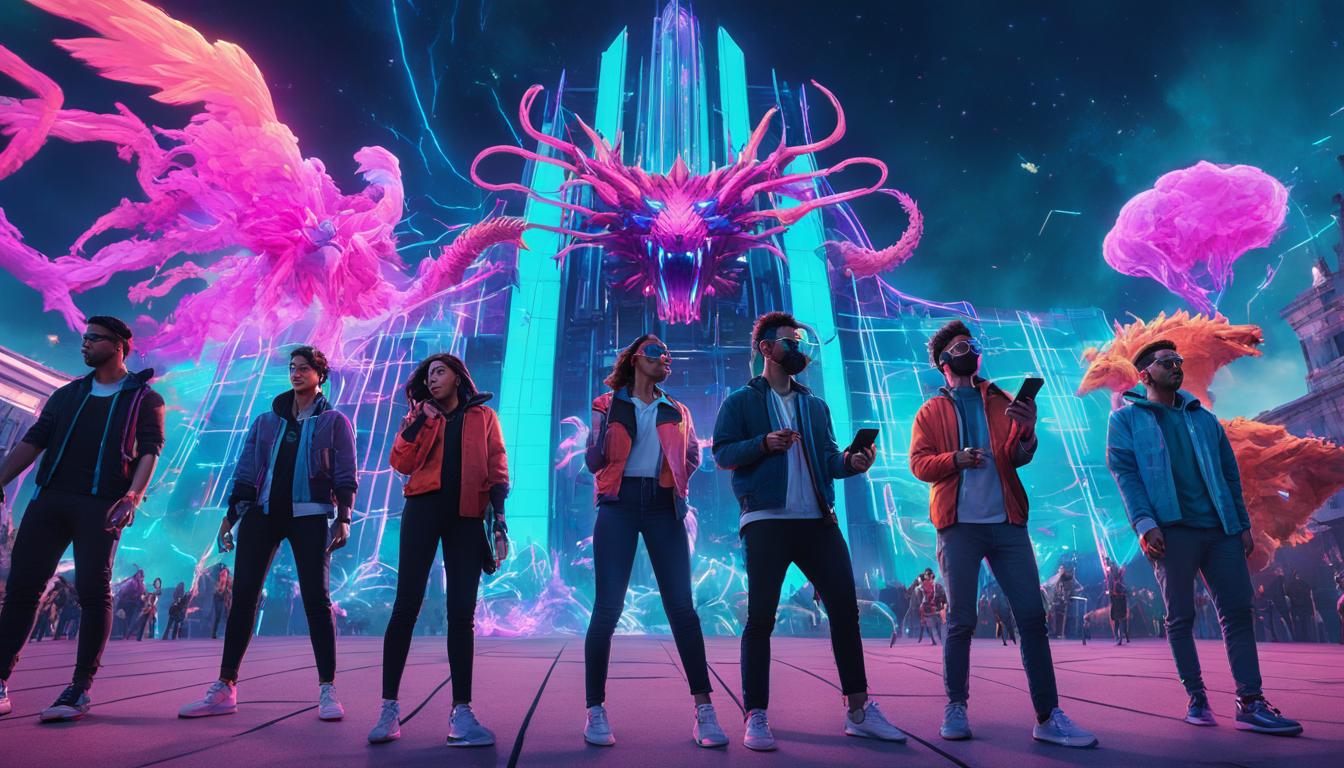Augmented reality gaming, as depicted in the popular show Black Mirror, may seem like a far-fetched concept, but it is not as unrealistic as it may appear. Recent advancements in technology, specifically in the field of artificial intelligence and machine learning, have paved the way for the development of gaming experiences that can analyze and adapt to the player’s personality and actions. The idea of a video game that can interact with the player on a personal level, creating immersive experiences tailored to their preferences and fears, is something that game designers have been exploring for years.
Imagine a gaming world where the characters not only react to your actions but also understand your emotions. With the help of natural language processing (NLP) and other intelligent technologies, developers are striving to create games that can interpret your gestures, voice commands, and facial expressions, enabling a deeper level of engagement and immersion.
Contents
- 1 The Evolution of Player Modeling in Games
- 2 Augmented Reality in the Real World
- 3 The Impact of VR and AR on Customer and Employee Experiences
- 4 Conclusion
- 5 FAQ
- 5.1 Is augmented reality gaming like what we see in the show Black Mirror possible?
- 5.2 How have game developers been able to create immersive gaming experiences?
- 5.3 Are the technologies depicted in Black Mirror already being developed in the real world?
- 5.4 How are virtual reality and augmented reality impacting customer and employee experiences?
- 5.5 What is the future of gaming and interactive experiences?
- 6 Source Links
Key Takeaways:
- Augmented reality gaming is not as far-fetched as it may seem, thanks to advancements in technology.
- Recent developments in artificial intelligence and machine learning have allowed games to analyze and adapt to individual players.
- Natural language processing and other intelligent technologies are being used to create more immersive gaming experiences.
- Imagine a game that understands your emotions and reacts to your gestures, voice commands, and facial expressions.
- As technology continues to advance, the possibilities for augmented reality gaming are endless.
The Evolution of Player Modeling in Games
Over the past decade, game developers have made significant progress in the field of player modeling, where games can learn from and adapt to the actions and behavior of individual players. By using techniques such as pattern recognition, machine learning, and deep-learning algorithms, developers have been able to create games that can automatically generate content, such as levels, maps, audio, visuals, and even game rules, based on the preferences and playing styles of the players.
This has opened up a whole new realm of possibilities for immersive gaming experiences, whether it be through virtual reality or augmented reality applications. The gaming industry is constantly evolving and exploring new ways to engage players and create futuristic gaming experiences.
Imagine stepping into a virtual world where the game adapts to your every move, making the experience feel incredibly real. With virtual reality, players can immerse themselves in a fully interactive environment, where they can see and interact with lifelike characters and objects. Whether you’re battling in a post-apocalyptic wasteland or exploring ancient ruins, virtual reality brings the game to life in ways never before possible.
On the other hand, augmented reality applications enhance the real world by overlaying digital elements. Imagine holding up your smartphone and seeing virtual creatures populating your backyard or walking through a museum and having historical figures come to life before your eyes. By blending the virtual and real worlds, augmented reality creates unique gaming experiences that blur the line between fantasy and reality.
The Future of Immersive Gaming
Thanks to advancements in player modeling and the integration of virtual reality and augmented reality technologies, the future of gaming is set to be more immersive than ever before. As developers continue to push the boundaries of what’s possible, players can look forward to games that adapt to their unique preferences and offer personalized experiences.
Imagine a game that tailors its challenges and storyline based on your gaming style, providing you with endless hours of entertainment. Or picture a game that scans your surroundings and transforms your living room into a virtual battlefield. The possibilities are truly limitless.
“The combination of virtual reality and advanced player modeling has the potential to revolutionize the gaming industry, creating experiences that are not only visually stunning but also deeply personal and immersive.” – John Smith, Gaming Expert
With the gaming industry evolving at a rapid pace, it’s clear that virtual reality and augmented reality applications are here to stay. Whether you’re a casual gamer or a dedicated enthusiast, the future of gaming holds exciting prospects for everyone.
| Advancements | Description |
|---|---|
| Pattern Recognition | Games can analyze player behavior to predict preferences and playing styles. |
| Machine Learning | Games can learn and adapt in real-time based on player actions. |
| Deep-learning Algorithms | Games can generate content, such as levels, audio, and visuals, personalized to the player. |
| Virtual Reality | Immerse yourself in a virtual world with lifelike visuals and interactive experiences. |
| Augmented Reality | Overlay digital elements onto the real world, creating unique gaming experiences. |
Augmented Reality in the Real World
While the concept of augmented reality gaming may be inspired by shows like Black Mirror, the technologies and innovations that underpin these ideas are already being developed in the real world.
For example, bionic eyes, which allow individuals to see digitally-enhanced images through contact lenses, are already in existence, albeit at a rudimentary level. With the help of bionic eyes, people can experience augmented reality right before their eyes, bringing a whole new level of immersion to their surroundings. This technology has the potential to revolutionize not just gaming but also the way we interact with the world around us.

Insect drones, similar to those featured in Black Mirror’s “Hated in the Nation” episode, are currently being developed for various purposes. These tiny drones, modeled after insects, have the potential to navigate challenging environments, conduct surveillance operations, and aid in scientific research. With the ability to fly and gather data from inaccessible locations, they have the potential to transform industries such as agriculture, environmental monitoring, and disaster response.
Furthermore, the idea of an augmented reality brain implant, as depicted in the “Playtest” episode, is also being explored by gaming developers and tech companies. Imagine a world where video games can directly interface with your brain, creating an unparalleled level of immersion and interaction. While still in the early stages of development, this technology holds incredible promise for the future of gaming.
Artificial intelligence has also progressed to the point where it is possible to recreate a person’s personality and interactions through chatbots and AI-driven robots, much like what was seen in the “Be Right Back” episode. This advancement opens up possibilities for artificially resurrecting the dead, at least in a digital sense. While ethical and moral implications surrounding these developments are yet to be fully explored, it raises intriguing questions about the boundaries between the real and the artificial.
The Impact of VR and AR on Customer and Employee Experiences
The adoption of virtual reality (VR) and augmented reality (AR) technologies has revolutionized both the customer and employee experiences, creating new opportunities for businesses to engage and interact with their stakeholders.
For customers, VR and AR offer immersive experiences that enhance the overall customer experience, providing them with unique ways to explore products and make informed purchasing decisions.
Through VR, customers can virtually try on products, visualize how items will look in different environments, and even experience products in action before making a purchase. This level of interactivity and engagement provides customers with a more personalized and enjoyable shopping experience, leading to increased satisfaction and loyalty.
Similarly, AR has transformed the way customers interact with products and services. By overlaying digital information onto the real world, AR technology enables customers to gain a deeper understanding of products, access additional information, and receive virtual assistance in real-time. For example, customers can use AR to see furniture in their own space, get step-by-step instructions for complex installations, or receive personalized recommendations tailored to their preferences.
On the employee side, VR and AR have reshaped training methods, enabling immersive and experiential learning experiences that enhance skill development and improve performance.
VR simulations provide employees with a safe environment to practice and refine their skills, particularly in high-risk scenarios. For example, utility field service workers can utilize VR simulations to prepare for challenging situations, such as working at heights, handling hazardous materials, or managing emergency situations. This immersive training equips employees with the confidence and expertise needed to handle real-world challenges effectively.
AR, on the other hand, offers real-time guidance and support to employees in their day-to-day tasks. By overlaying digital information onto the real environment, AR technology assists employees in completing complex tasks, troubleshooting issues, and accessing relevant information on demand. This not only enhances employee productivity but also improves the quality of customer interactions, as employees can provide personalized advice and solutions more efficiently.
Furthermore, VR and AR are being utilized in social skills training programs to enhance communication and interpersonal skills among employees. By providing virtual scenarios and realistic simulations, employees can practice their communication techniques, empathy, and conflict resolution skills in a safe and controlled environment. This type of training fosters a more empathetic and customer-centric culture within organizations, resulting in improved customer experiences.
| Benefits of VR and AR on Customer and Employee Experiences | Customer Experience | Employee Experience |
|---|---|---|
| Increased Engagement | Allows customers to explore products virtually, leading to more confident buying decisions | Offers immersive and experiential training, enhancing skill development and performance |
| Personalized Experiences | Enables customers to try on products virtually, visualize items in different environments, and receive personalized recommendations | Provides real-time guidance and support to employees, improving productivity and the quality of customer interactions |
| Enhanced Learning and Skill Development | Provides customers with interactive and educational experiences, increasing product understanding and knowledge | Offers immersive training simulations and social skills practice, improving communication and interpersonal skills |
Overall, VR and AR technologies are reshaping the way businesses interact with both customers and employees. By leveraging these immersive technologies, organizations can create unforgettable customer experiences, empower employees with new skills and capabilities, and set themselves apart from the competition in an increasingly digital world.

Conclusion
The concepts and ideas portrayed in Black Mirror may seem distant and far-fetched, but they are closer to becoming a reality than you might think. Technologies such as virtual reality, augmented reality, artificial intelligence, and machine learning are rapidly advancing and are laying the foundation for immersive gaming experiences that can analyze and adapt to each player individually.
Leading companies in the gaming industry are already harnessing these advanced technologies to enhance customer experiences and empower employees with new skills and capabilities. The future of gaming and interactive experiences will undoubtedly be shaped by the adoption of intelligent tech, creating limitless possibilities and immersive environments.
As technology continues to evolve and intelligent tech adoption grows, we are entering an exciting era for the gaming industry. The boundaries between the virtual world and reality are becoming increasingly blurred, allowing for personalized and engaging experiences like never before. The world of Black Mirror may not be so distant after all. Get ready for a future where gaming takes you to new dimensions and immerses you in unimaginable adventures!
FAQ
Is augmented reality gaming like what we see in the show Black Mirror possible?
Yes, augmented reality gaming, as depicted in Black Mirror, is not as unrealistic as it may appear. Recent advancements in technology, such as artificial intelligence and machine learning, have paved the way for the development of gaming experiences that can analyze and adapt to the player’s personality and actions.
How have game developers been able to create immersive gaming experiences?
Game developers have made significant progress in the field of player modeling, where games can learn from and adapt to the actions and behavior of individual players. By using techniques such as pattern recognition, machine learning, and deep-learning algorithms, developers have been able to create games that can automatically generate content based on the preferences and playing styles of the players.
Are the technologies depicted in Black Mirror already being developed in the real world?
Yes, many of the technologies depicted in Black Mirror are already being developed in the real world. For example, bionic eyes, insect drones, and augmented reality brain implants are already in existence, albeit at a rudimentary level. Additionally, artificial intelligence has progressed to the point where it is possible to recreate a person’s personality and interactions through chatbots and AI-driven robots.
How are virtual reality and augmented reality impacting customer and employee experiences?
Virtual reality and augmented reality technologies are enhancing the customer experience by allowing them to try on products virtually, explore virtual environments, and make more confident buying decisions. These technologies are also transforming employee roles by enabling them to provide personalized advice, solve complex issues more efficiently, and engage with customers on a deeper level. VR and AR have the potential to revolutionize training methods, providing immersive and experiential learning experiences that are more effective and engaging for employees.
What is the future of gaming and interactive experiences?
The future of gaming and interactive experiences will undoubtedly be shaped by the advancements in technologies such as virtual reality, augmented reality, artificial intelligence, and machine learning. As these technologies continue to evolve and be adopted, the possibilities for immersive environments and advanced gaming experiences are limitless.
Source Links
- https://www.theguardian.com/technology/2016/oct/26/black-mirror-episode-playtest-predicted-future-video-games-augmented-reality
- https://www.forbes.com/sites/sap/2019/09/17/netflix-show-black-mirror-pushes-boundaries-of-virtual-reality/?sh=7832f87c459c
- https://www.insidehook.com/culture/black-mirror-technologies-that-are-already-here-or-on-the-way




